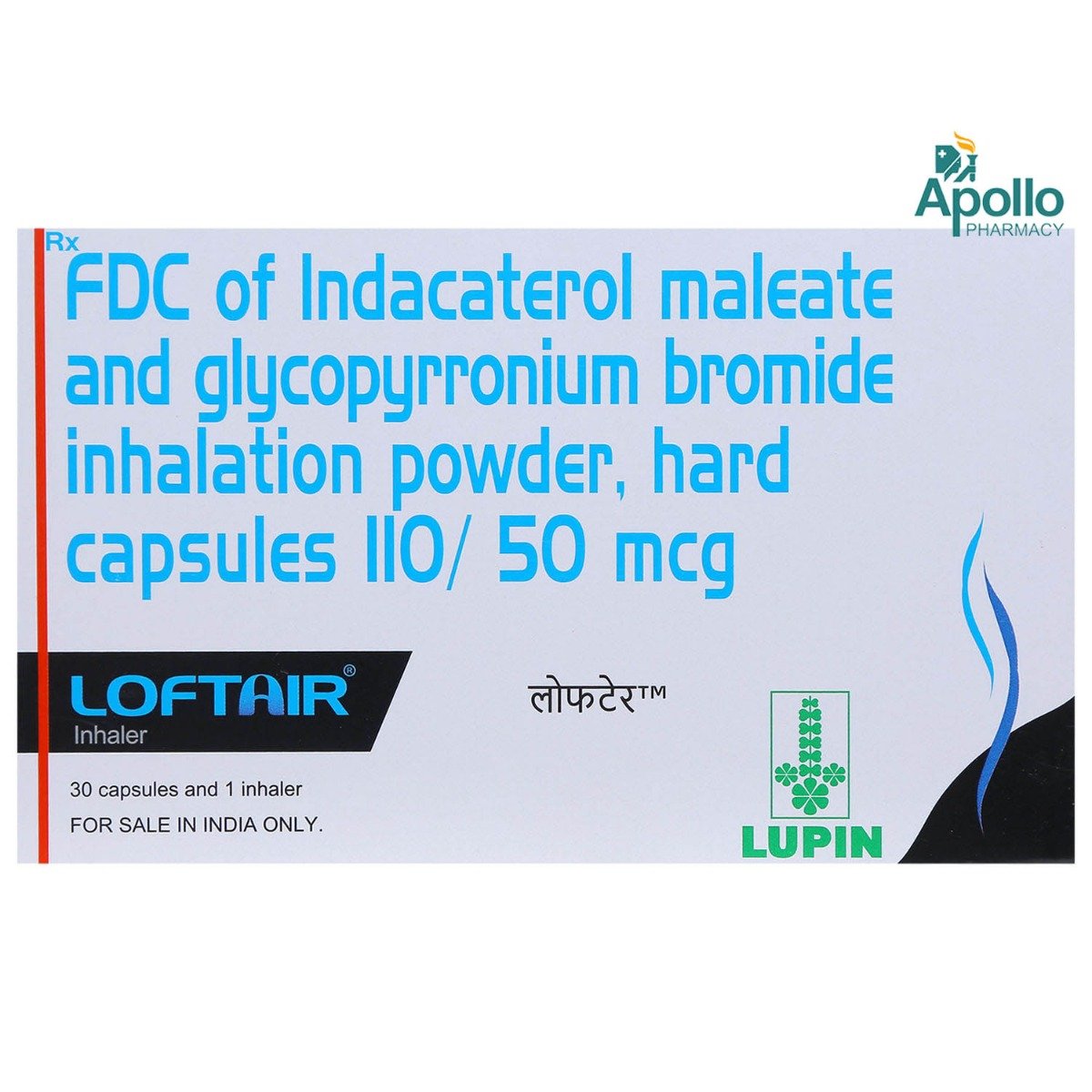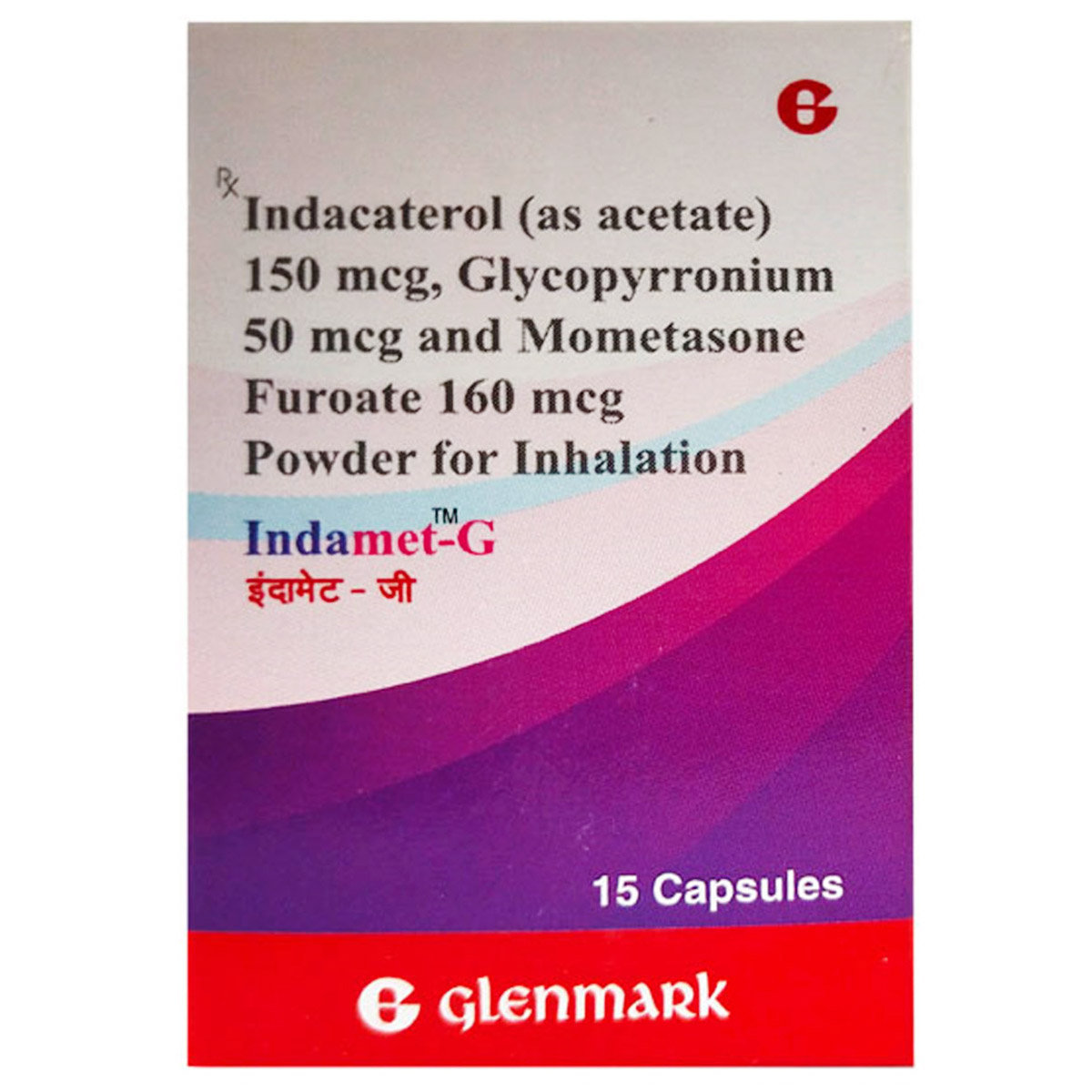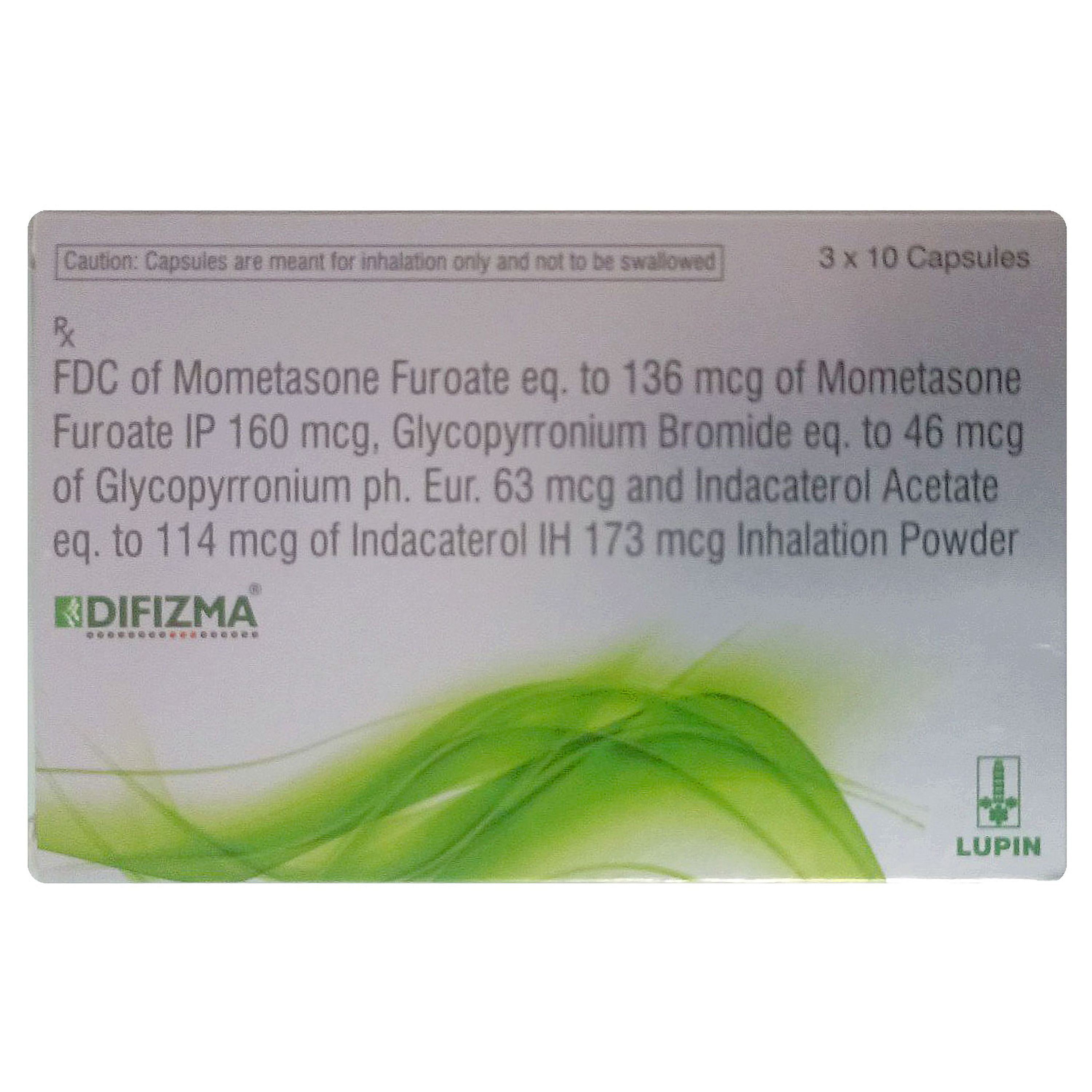Indacaterol+glycopyrronium
About Indacaterol+glycopyrronium
Indacaterol+glycopyrronium is indicated for long-term, maintenance treatment of Chronic Obstructive Pulmonary Disease (COPD). COPD is a group of lung diseases with emphysema (shortness of breath) and chronic bronchitis (inflammation of the bronchial tube lining).
Indacaterol+glycopyrronium is a combination of two medicines, namely: Indacaterol and Glycopyrronium. Indacaterol relaxes and widens the openings in the airways, making it easier to breathe. Glycopyrronium decreases the secretions in the airways. Together, Indacaterol+glycopyrronium provides relief from COPD.
In some cases, you may experience certain common side effects such as upper respiratory tract infection, inflammation of the sinuses, runny/stuffy nose, headache, dizziness, and stomach upset. Most of these side effects do not require medical attention and will resolve gradually over time. However, you are advised to talk to your doctor if you experience these side effects persistently.
Do not stop taking Indacaterol+glycopyrronium on your own, as it might cause worsening of symptoms. Consult your doctor before taking Indacaterol+glycopyrronium if you are pregnant or breastfeeding. Indacaterol+glycopyrronium may cause dizziness, so drive with caution. Avoid consuming alcohol, as it might cause increased dizziness.
Indacaterol+glycopyrronium is not recommended for children below 18 years, as the safety and effectiveness have not been established. Keep your doctor informed about your health condition and the medicines you are taking to avoid any interactions.
Uses of Indacaterol+glycopyrronium
Medicinal Benefits
- Provides long-term maintenance treatment for chronic obstructive pulmonary disease (COPD), including chronic bronchitis and emphysema.
- Indacaterol, a long-acting beta-2 agonist (LABA), helps relax and widen the airway muscles, improving airflow and breathing comfort.
- Glycopyrronium works by preventing airway constriction and keeping the air passages open.
- The dual bronchodilator action ensures better and longer-lasting control of COPD symptoms for up to 24 hours.
- Helps reduce breathlessness, wheezing, chest tightness, and coughing associated with COPD.
- Improves lung capacity, oxygen intake, and overall respiratory function.
- Ensures accurate dosing and effective delivery of medicine directly into the lungs.
Directions for Use
- Follow your doctor’s instructions on the dosage and timing of this medication to ensure safe and effective use.
- Check the label for directions before using it. Place the capsule in the inhaler device, press both side buttons at the same time until you hear a sound to pierce the capsule. Release side buttons. Place the mouthpiece into your mouth and seal your lips around it. Inhale deeply through the mouthpiece.
- Indacaterol+glycopyrronium is for inhalation only. Do not swallow the capsules.
- The capsules must always be stored in the blister, and only removed immediately before use.
- The capsules are for use only with the inhaler provided in the pack.
- Discard inhaler after 30 days of use.
Storage
Side Effects of Indacaterol+glycopyrronium
- Upper respiratory tract infection
- Nasopharyngitis (sore throat and runny nose)
- Painful and frequent urination
- Inflammation of the sinuses
- Runny or stuffy nose
- Headache
- Dizziness
- Cough
- Stomach upset
- Indigestion
Drug Warnings
- Do not take Indacaterol+glycopyrronium if you are allergic to any of its components.
- Inform your doctor if you have asthma, heart problems, seizures/epilepsy, thyroid gland problems, diabetes, narrow-angle glaucoma, kidney problems, severe liver problems, if you have any difficulty in passing urine or if you are taking any medicines for lung diseases.
- Consult your doctor if you are pregnant or breastfeeding.
- Indacaterol+glycopyrronium may cause dizziness, so drive with caution.
- Avoid consuming alcohol, as it might cause increased dizziness.
- Indacaterol+glycopyrronium is not recommended for children below 18 years, as safety and effectiveness have not been established.
Drug Interactions
Drug-Drug Interactions: Indacaterol+glycopyrronium may interact with beta-blocker (propranolol, timolol), steroid (prednisolone), diuretic (hydrochlorothiazide), anti-asthma (theophylline).
Drug-Food Interactions: No interactions found/established.
Drug-Disease Interactions: Inform your doctor if you have narrow-angle glaucoma, difficulty in urination, heart/liver/kidney problems, seizures, gastrointestinal obstruction, hypertension, myasthenia gravis, or infectious diarrhoea.
Drug-Drug Interactions Checker List:
Safety Advice

Alcohol
unsafeYou are recommended to avoid alcohol consumption while taking Indacaterol+glycopyrronium as it might increase side effects like dizziness, drowsiness or impaired coordination.

Pregnancy
consult your doctorPlease consult your doctor if are pregnant or planning pregnancy before using Indacaterol+glycopyrronium.

Breast Feeding
consult your doctorPlease consult your doctor if are a breastfeeding mother before using Indacaterol+glycopyrronium.

Driving
cautionIndacaterol+glycopyrronium may cause dizziness. Drive or operate machinery only if you are alert.

Liver
cautionDose adjustment may be needed. Please consult your doctor if you have liver impairment/liver disease or any concerns regarding this.

Kidney
cautionDose adjustment may be needed. Please consult your doctor if you have kidney impairment/kidney disease or any concerns regarding this.

Children
unsafeIndacaterol+glycopyrronium is not recommended for children and adolescents below 18 years as safety and effectiveness have not been established.
Habit Forming
Diet & Lifestyle Advise
- Eat a healthy diet and exercise regularly to strengthen your breathing muscles and boost your immune system.
- Avoid foods such as cabbage, beans, garlic, onions, shrimp, pickled food, dried fruits, fried foods, carbonated drinks, wine, and bottled lemon and lime juice, as they may worsen symptoms.
- Do meditation, deep breathing, regular exercise, and try progressive muscle relaxation techniques to get relief from stress and reduce the risk of an attack.
- Quit smoking, as it might irritate the lungs and worsen breathing problems.
- Learn breathing exercises like pursed-lip breathing. It helps provide relief from COPD.
Patients Concern
Disease/Condition Glossary
Chronic Obstructive Pulmonary Disease (COPD): It is a group of lung diseases with emphysema (shortness of breath) and chronic bronchitis (inflammation of the lining of bronchial tubes). In COPD, the muscles around the airways tighten, making it difficult to breathe. The major cause of COPD is smoking tobacco. Also, long-term exposure to fumes and chemicals may lead to COPD. The symptoms include chronic cough, shortness of breath, or wheezing (a whistling sound while breathing).
FAQs
Indacaterol+glycopyrronium is used to treat Chronic Obstructive Pulmonary Disease (COPD).
Indacaterol+glycopyrronium contains Indacaterol and Glycopyrronium. Indacaterol relaxes and widens the openings in the airways, making it easier for the air to get in and out of the lungs. Glycopyrronium decreases the secretions in the airways. Together, Indacaterol+glycopyrronium provides relief from COPD.
Indacaterol+glycopyrronium is indicated as an ongoing treatment for COPD. It does not treat a sudden attack of wheezing or breathlessness. Use a rescue inhaler to treat sudden breathing problems.
Dry mouth could be a side-effect of Indacaterol+glycopyrronium. Limiting caffeine intake, avoiding smoking and mouthwashes containing alcohol; drinking water regularly and chewing sugar-free gum/candy might help in stimulating saliva and thereby prevents drying of the mouth.
Do not stop using Indacaterol+glycopyrronium on your own as it might cause worsening of symptoms. To treat your condition effectually, continue using Indacaterol+glycopyrronium for as long as your doctor has prescribed it. Talk to your doctor if your breathing problems, wheezing, or cough do not improve or worsen.
No, Indacaterol+glycopyrronium is not indicated for the treatment of asthma as the safety and effectiveness of Indacaterol+glycopyrronium in patients with asthma have not been established. Consult your doctor if you have asthma.








